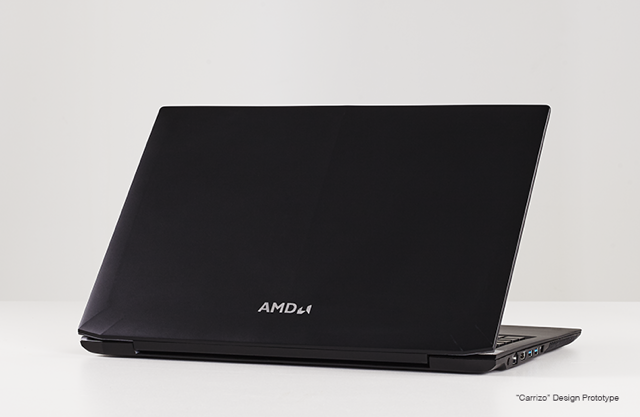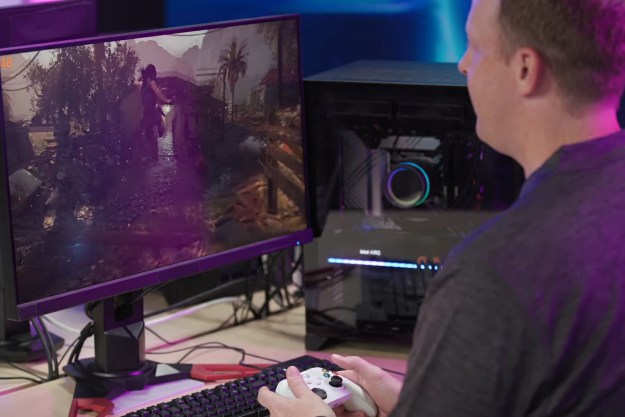
The newest, and most interesting, is Carrizo, AMD’s upcoming platform for notebooks and small desktop PCs. This is one area where the company can still fight off the Intel juggernaut, as raw performance is less important, but huge efficiency gains in fifth-generation Core processors could overwhelm this market, too.
Keeping it simple
Carrizo’s primarily goal, according to AMD, is a simplification of the company’s offerings for notebooks. It wants to create a single platform that can scale to a variety of performance and portability targets rather than two or three separate platforms, the strategy that it previously pursued (Intel has a similar split between its Atom and Core processors).

All versions of Carrizo will share a long list of similar features. They’re all based on the newest “Excavator” core, they all have AMD Radeon graphics with support for Mantle and DirectX 12, and they all integrate the processor, APU, and Southbridge into a single chip. This will help manufacturers span a wider range of price points with a single notebook chassis.
AMD’s strategy is clear: Intel’s only weakness is its titanic size, which makes it a bit stubborn. Often the company seems to demand that manufacturers build systems to suit its chips rather than the other way around. AMD hopes an accommodating platform will attract manufacturers by lowering the cost of building notebooks.
Betting on visuals
Flexibility isn’t the only advantage offered by Carrizo, however. All the chips come with AMD Radeon graphics (performance varies based on processor), and as usual this is being leveraged to gain the upper hand.
There’s something different this time around, however; the company isn’t talking about games. 4K provides a chance for Carrizo to differentiate itself because not all versions of Intel’s graphics can handle 4K at the ideal 60Hz refresh rate. AMD’s latest, by contrast, will always support the resolution – even in the least powerful versions. A $600 system with a 15-inch, 3,840 × 2,160 panel could be possible.

AMD’s also endowing Carrizo with the ability to decode H.265 video. At the time of this announcement it was a huge advantage over Intel, as the company didn’t offer GPU decoding with any of its processors. That situation has changed, however, with the recent announcement that 4th-gen and 5th-gen Core processors, along with the Core M line, can now support GPU decoding with a driver update. Intel’s Atom processors won’t receive this support, however, which is a shame — they could really use it.
Last, but not least, is the one major gaming feature: FreeSync. This frame synchronization technology can tie display refresh rate to framerate, effectively eliminating unsightly stutters and tearing in 3D games. This technology already exists, of course, but Carrizo will support it in notebooks if manufacturers choose to use it. That’s a potential first in mobile – unless Nvidia pairs with a manufacturer to unveil G-Sync laptops early this year.
Still a long shot
AMD’s intent is clear. The company hopes Carrizo will woo manufacturers with its promise of an easy to implement platform boasting superior graphics and media features. Yet an important question remains unanswered: What’s the performance like?
We can’t tell you, or even give you a hint, because AMD said very little about raw per-core capability. No hard figures, no relative comparisons, no promises. The numbers that were presented focused on subjects like graphics performance and GPU-accelerated computing, niches where AMD can compete.
What we do know is that Carrizo processors will target a thermal design power of up to 35 watts and won’t scale down enough to be put in fanless notebooks. That means we’re talking a minimum TDP of about 10 watts, which is twice the most conservative Core M.

That’s a problem. At CES 2015 we saw numerous systems that push the boundaries of notebook portability, from the 1.7-pound Lenovo LaVie Z to the Dell XPS 13, which boasts up to 15 hours of battery life. AMD’s cores simply can’t compare to Intel’s in efficiency, and as a result they’re much slower in desktops and can’t achieve comparable battery life in notebooks.
Nothing we’ve seen indicates that Carrizo will change that, which means AMD will continue to struggle. Sure, it may offer a more streamlined platform with a better GPU, but it’ll be hard to sell Carrizo notebooks to consumers if battery life is a fraction of the Intel alternatives.
Editors' Recommendations
- Everything we know about Lunar Lake, Intel’s big next-generation chips
- The best budget CPUs you can buy in 2024
- AMD’s next-gen CPUs are much closer than we thought
- Best tools to stress test your CPU
- It just became the perfect time to buy a last-gen Intel CPU



